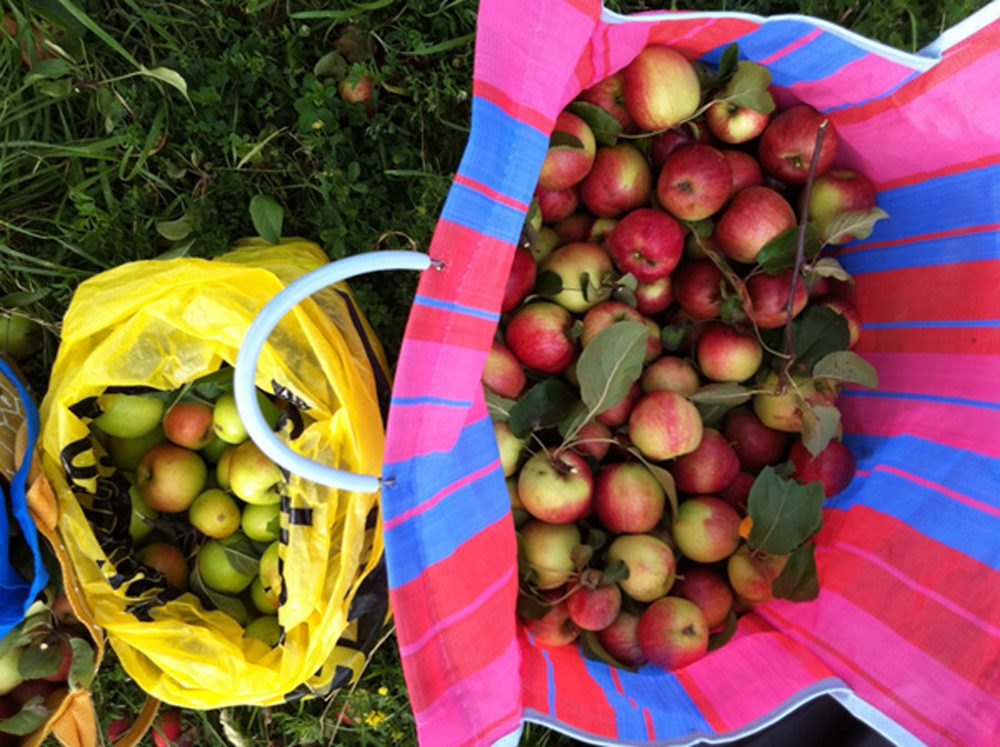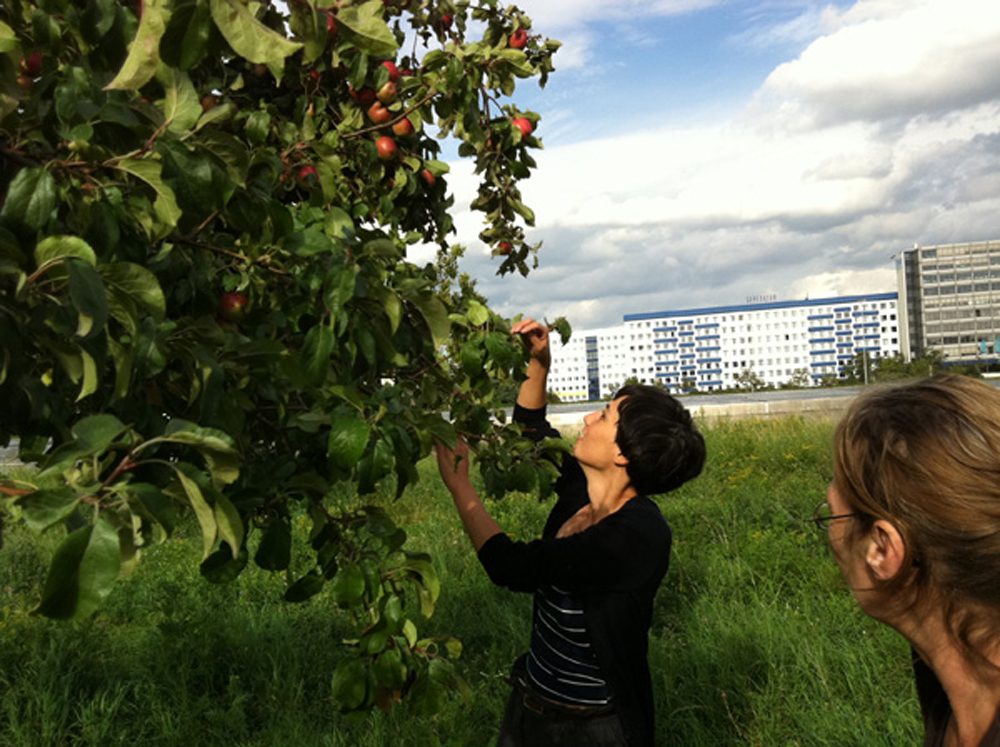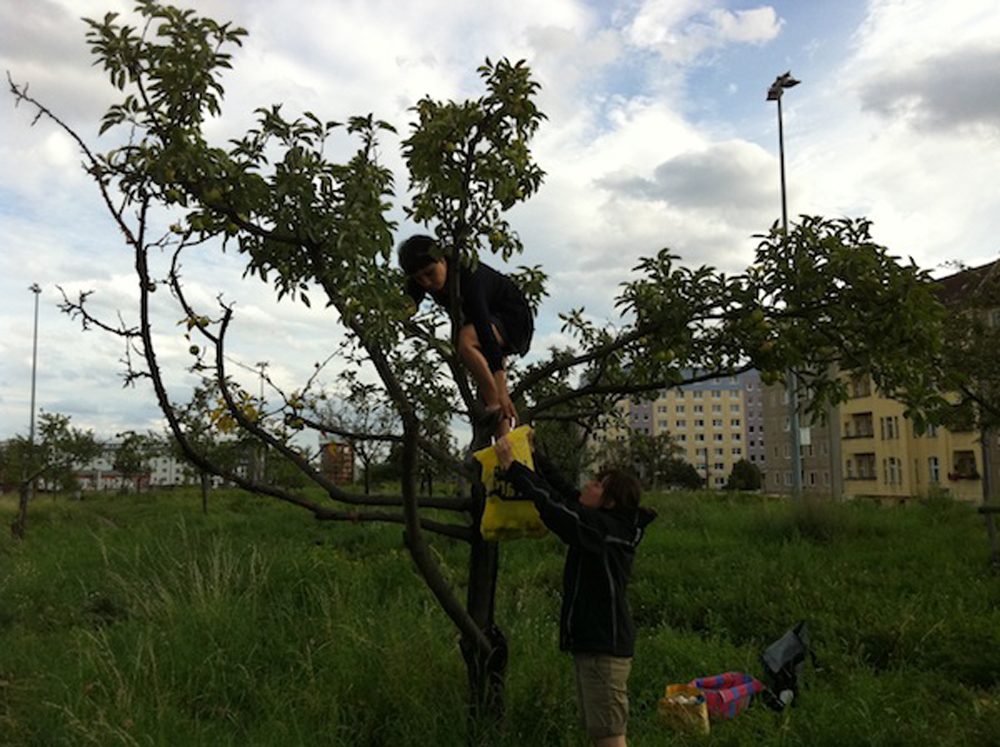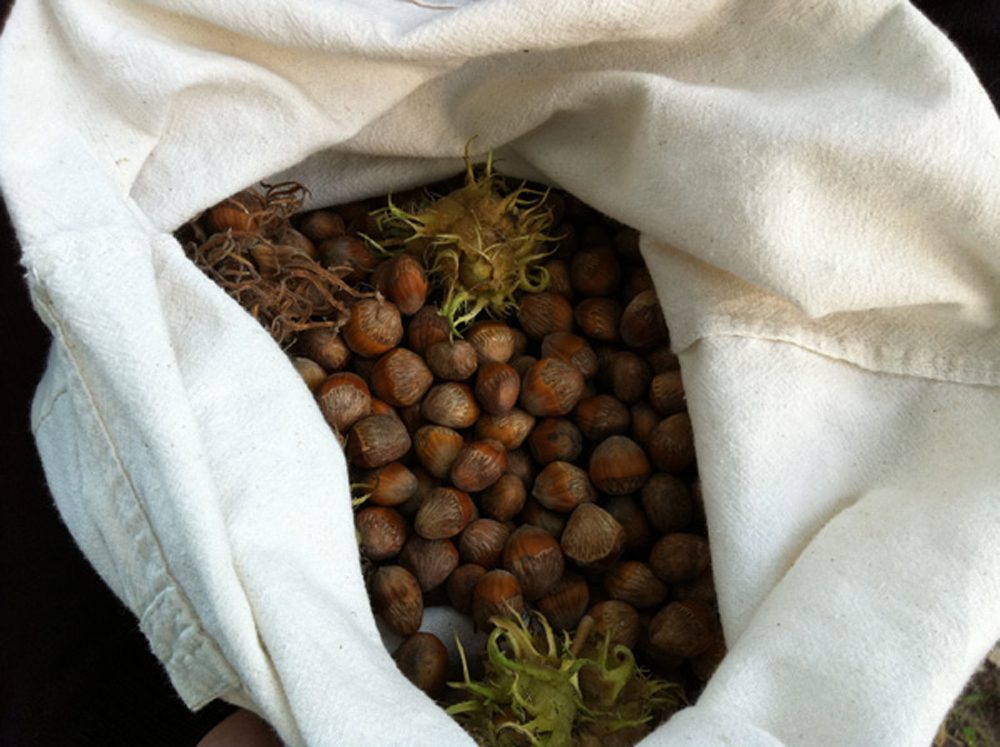
One of the great things about living in Berlin are the abundant fruit and nut trees scattered throughout the city. From holunder to mirabelle to apples and hazelnuts, fresh fruit is never far away, as long as you look for it. The website Mundraub (meaning petty theft but directly translated as mouth thief in German) is a relatively new open source database of public fruit trees throughout Germany. While it is very impressive, it is still young and relies entirely on the input of the public to build the database.
The history of public fruit goes back decades in Germany, and apparently was part of the East German strategy to help supplement the diet of its citizens. There are places in the former East Germany that still remains today as big public spaces cultivated with fruits.
I consulted Mundraub recently for a fruit foraging party I organized in mid September with the chef and artist Tainá Guedes from Share Your Food. Yet foraging success came to us by accident as we skidded our bikes across a sidewalk full of fallen hazelnuts and then again when word of mouth led us to a small orchard of apple trees full with fruit on Landsberger Allee. After about an hour, with our bikes laden with fruit we headed back to Tainá’s kitchen to prepare a few recipes on canning and preserving. Examples from our harvest were later displayed at the Eat In Teller statt Tonne created by Slow Food Germany to raise awareness about food waste in the city. And then again at the opening of the Markthalle Neun in Kreuzberg we were invited by Slow Food to demonstrate how to make apple chutney with the gathered apples. Our finished product was a delicious chutney on top of curry toasted croutons with old bread donated by Landbrot Bakery.
While urban fruit isn’t exactly food waste, it is a public resource in Berlin that often gets overlooked for a variety of reasons. Probably mostly because not all the fruit is pure bred for taste and so the apples can be a little sour, the plums a little small, and the hazelnuts somewhat dry. Foraging for urban fruit also requires a leap of faith in terms of identifying edible fruits, and confidence that the fruit is not contaminated with pollutants. And of course it demands some adventure to reach into urban foliage where humans don’t often go. You never know exactly what you’ll put your hand on. I can understand why it’s not everyone’s cup of tea.
However, when urban fruits are forgotten and ignored, like the apple tree in my hinterhof, it reminds me of how far we are from our food system. It is an indicator that we are so programmed to think of food coming from the store and not from the earth that we can walk past a tree with apples hanging in the branches every day and ignore them. It is an example of how the functionality of the urban environment as a physical and social hierarchy over nature and the environment is deeply engraved in our culture. But why shouldn’t we value the city for more of what it can offer us besides jobs, shopping malls, traffic and dance clubs, and push it towards a sustainable vision that incorporates more food production?
What excites me and people of many generations about foraging for urban fruit is the awareness of the city around us and literally the fruits it has to offer. For some in East Germany it is a tradition that they lived through for survival during food shortages. For others it is the creativity and freedom of participating in urban open space by utilizing it fully. And of course there is a growing romanticism of the cohabitation of people and agriculture in the urban environment, bringing us back to the proximity of the true meaning of agriculture, involving humans, culture, and food that nourishes us.
Berlin, 2011


